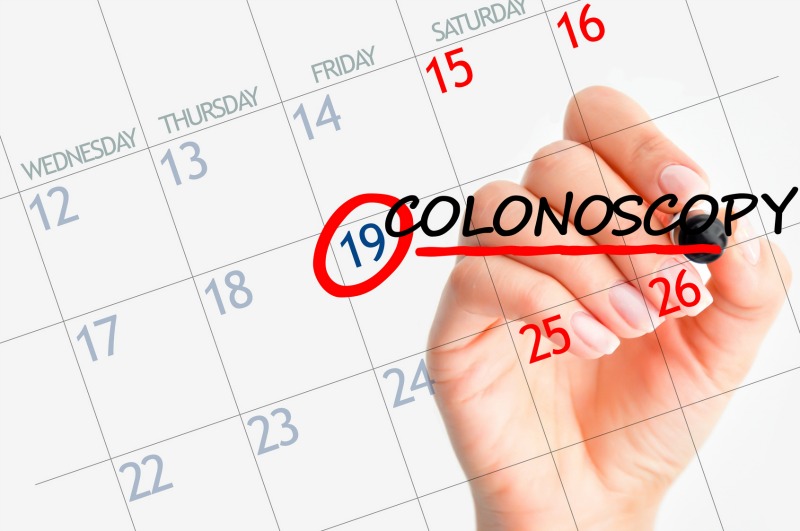The little-discussed risks and side effects of colonoscopy screening and why, in some cases, people would do best to avoid them. If you must have one, how to minimize the dangers as much as possible and a safe alternative to consider as a logical middle ground.
March is National Colon Cancer Awareness Month each year. At that time, the usual health experts trot out on TV and print media to urge us all to get a colonoscopy. The inherent risks of this reviled procedure especially for those over age 50 are usually conveniently glossed over in favor of an aggressive push about the benefits.
That “kick in the butt” might initially sound like a good idea. However, according to the Annals of Internal Medicine, the rate of serious complications from colonoscopy screening is ten times higher than any other commonly used cancer-screening test.
According to Konstantin Monastyrky, author of Fiber Menace:
The odds of being killed or injured by the side effects of colonoscopy may exceed your odds of getting colorectal cancer in the first place.
He further points out that the procedure is far from infallible. It often fails to catch colorectal cancer in the first place. In addition, it can cause, contribute to or accelerate the growth of colorectal and other cancers.
Let’s go into each of these colonoscopy risks in detail.
Dysbiosis
Intestinal flora is disrupted by a colonoscopy because the procedure requires a thorough washing out of the large intestine with large doses of synthetic laxatives. This is followed by bowel irrigation with polyethylene glycol and hypertonic electrolytes.
These substances kill bacteria, both good and bad just like antibiotics. The gut dysbiosis that inevitably follows contributes to irregularity, constipation, colitis, IBS, Crohn’s, and other diseases known to increase colon cancer risk. Dysbiosis also contributes to a wide range of other autoimmune health problems.
Worsening of Stool Patterns
Those already affected by hemorrhoids, chronic constipation, IBS, or diverticulosis may find these conditions become worse after colonoscopy.
Complications
Serious complications, such as colon perforation, occur in five out of every one thousand colonoscopies.
The risks of delayed bleeding, infection, and ulceration are even higher. Unfortunately, reporting of these complications in connection with colonoscopy is rare.
Increased Risks of Stroke, Heart Attack, and Pulmonary Embolisms
Dangerous blood clotting is a side effect of anesthesia, particularly among patients with diabetes or heart disease.
Infections
Procedures performed under anesthesia are associated with an increased risk of serious infections. This includes pneumonia or pyelonephritis.
False Sense of Security
Doctors miss from 15-27 percent of polyps, including six percent of large tumors. The New England Journal of Medicine even reported that some doctors blast through the colonoscopy so fast they miss cancer in full bloom!
Indeed, the desire for speed is why most colonoscopies today are done under anesthesia. Might there be a profit motive? Some doctors do 60 colonoscopies per day at an average cost of $1,500 to $2000 each. You do the math.
Colonoscopy Alternative
Many people do not realize that you can order an at-home colorectal screening kit to avoid most colonoscopies. They are inexpensive, safe, and convenient. Blood, polyps, and other abnormalities are quickly detected by using a simple stool sample. Results are available fast with lab accurate results.
If you have a positive result from one of these home tests, then go get a colonoscopy. But, in most cases, you will get a negative result, saving you the discomfort and risks of the actual colorectal screening.
Ways to Manage Colonoscopy Risks
Here are a few suggestions about how to increase the level of safety and accuracy in the screening for colon cancer.
- Those with a family history of colon cancer or otherwise at high risk probably should do a colonoscopy. But it is best to request to have it done without general anesthesia. That’s where the majority of the risks are. Some doctors offer inhalation sedation as a safer alternative. Doctors who prefer knocking the patient out use this approach so they can ‘jam’ through the colon much faster. Billing for anesthesiology increases revenues for the hospital too.
- Doing radiography first is pointless. The reason? If they find some polyps, you will still need to have a colonoscopy. Besides, you don’t want all that huge exposure to ionizing radiation.
- If you do decide to go through with a colonoscopy, at least prepare with clear broth you make yourself. Commercial brands at the store are not nutritious and contain unhealthy additives and MSG. Exposure to these chemicals can potentially make digestive issues worse and recovery more difficult.
- After the colonoscopy, follow this protocol to rebuild gut flora. It is the same process recommended by experts after a round of antibiotics.








I watched a man die from a botched colonoscopy in a hospital; it was a horrible way to die and I shall never forget his suffering, nor the suffering of his family.
Loved her book on Soy also!
Thanks for posting.
Z
Z
Thanks!
You couldn’t pay me to get a colonoscopy. Just add this to the other deadly test .. mammograms that cause more problems than they solve.
And my family thinks I am strange because I won’t let anyone shove foreign objects up my butt.
Un-freakin-believable! I was booked for one tomorrow…which I just cancelled!! I’d rather put my life in Gods hands and in my own then in the system.
It not often fails to catch many of them the cancers, or not only fails to catch many of them? Just checking to be sure what that sentence meant.